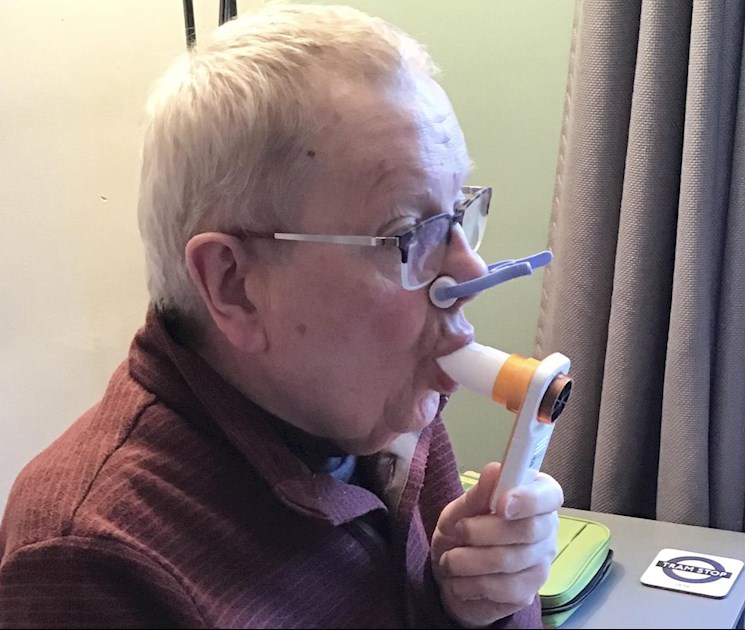I did a post yesterday about my open heart surgery and today this popped up - me with my gizmo - it is a spirometer which is linked by Bluetooth to my mobile telephone. I use it every other week t send test results to Nottingham City Hospital so that they can monitor my pulmonary fibrosis remotely. I go the the hospital once a year and have a telephone chat with my thoracic consultant six months in between.
I can see and have a record of my test results after I have done them, including graphs and it tells me if I do a test incorrectly, such are the wonders of modern technology.
By coincidence there is a report in The Guardian today about how bad the UK is at diagnosing and treating lung conditions. It says, among other things:
‘Across Europe, only Turkey has a higher respiratory death rate than the UK, analysis of data up to 2018 shows, the latest comparable data available from across the continent. The death rate is 162.7 per 100,000 people in Turkey and 134.5 in the UK.
In Germany, the rate is 76.8 while in France it is 59.1 – half the UK rate. People in the UK are three times more likely to die from lung conditions than people in Finland, which has the lowest respiratory death rate (38.4) in Europe, Asthma and Lung UK said.
It described the UK figures as “shameful”, and said that lung conditions had for too long been treated like the “poor relation compared with other major illnesses like cancer and heart disease”.
Despite them being the third biggest cause of death in the UK, only 2% of publicly funded research is spent on lung conditions, it added. The charity is calling for more funding to research diagnostic tools and treatments, and urged ministers to bring in tougher clean air targets. It also called for improvements in the care of patients outside hospital’.
I am clearly one of the lucky ones. Early diagnosis has to be the No.1 priority with easily reached ‘Asthma and Lung Centres’ - not ‘regional hubs’ involving expensive journeys for patients and those who support them.
I am also of the view that trained and supported ‘Lung Technicians/Nurses’, backed up by physios as well as doctors, working locally offe a cost effective way forward to the advantage of all.
Finally, we can afford to do these things. People are the greatest resource the nations which make up the United Kingdom have. We are worth the investment.

